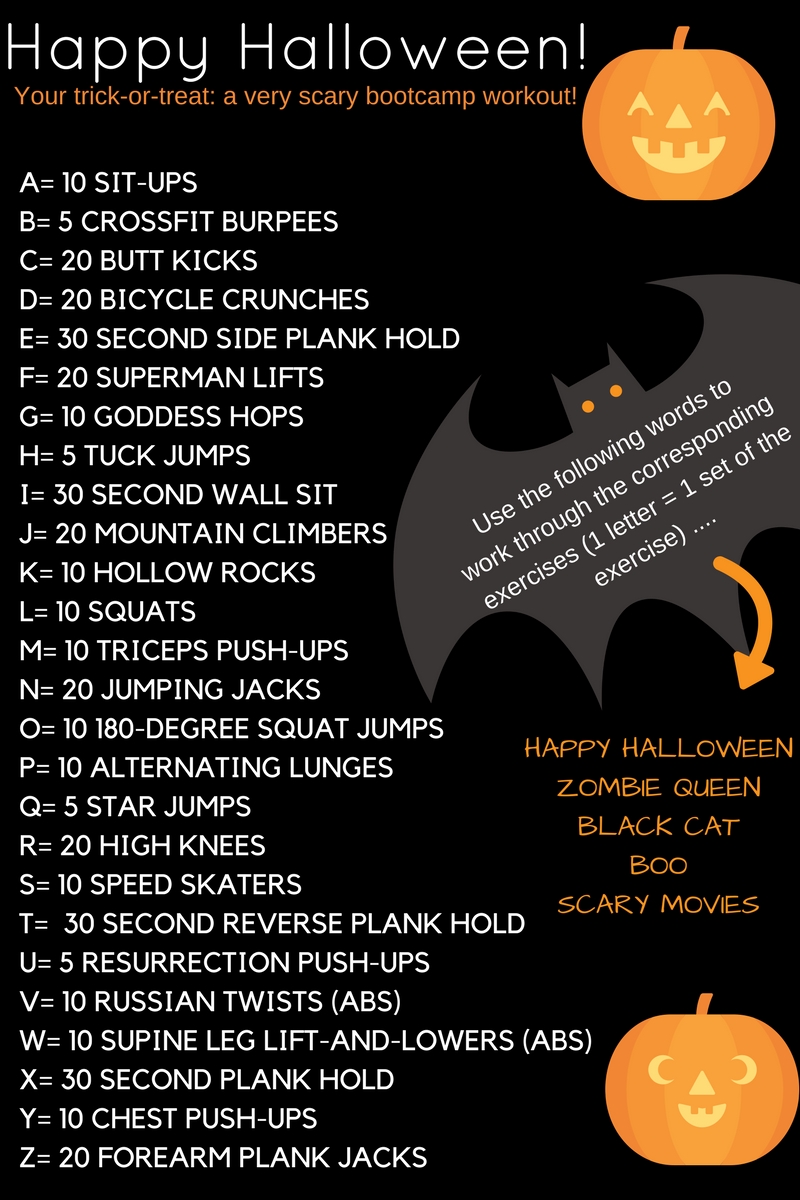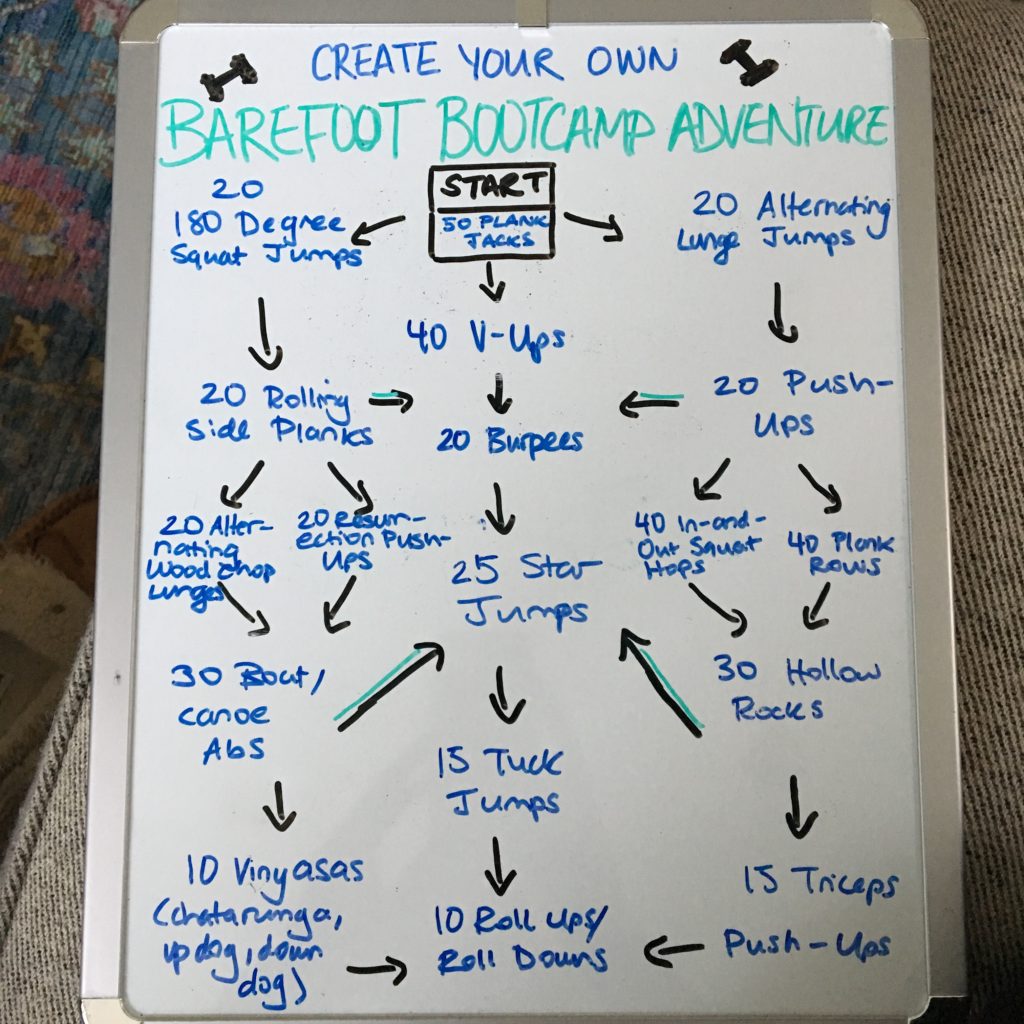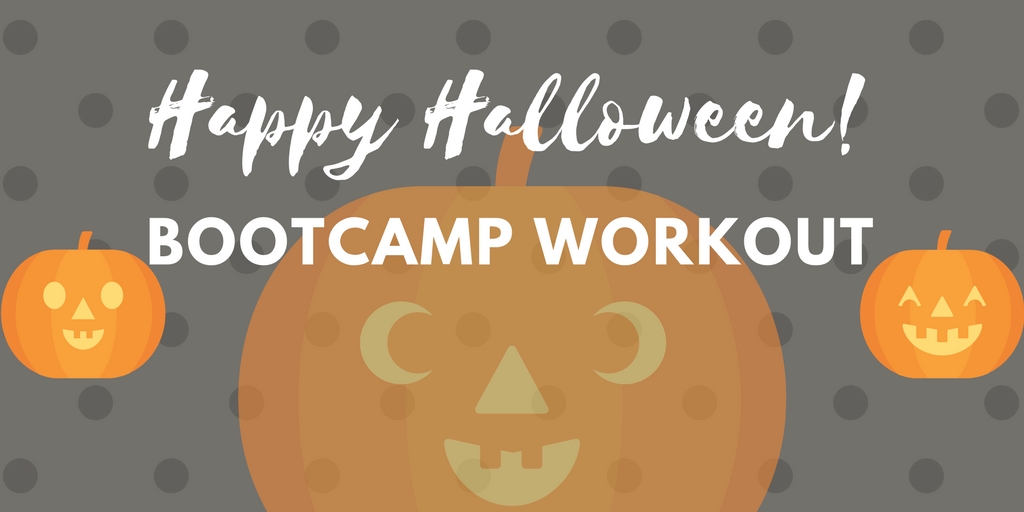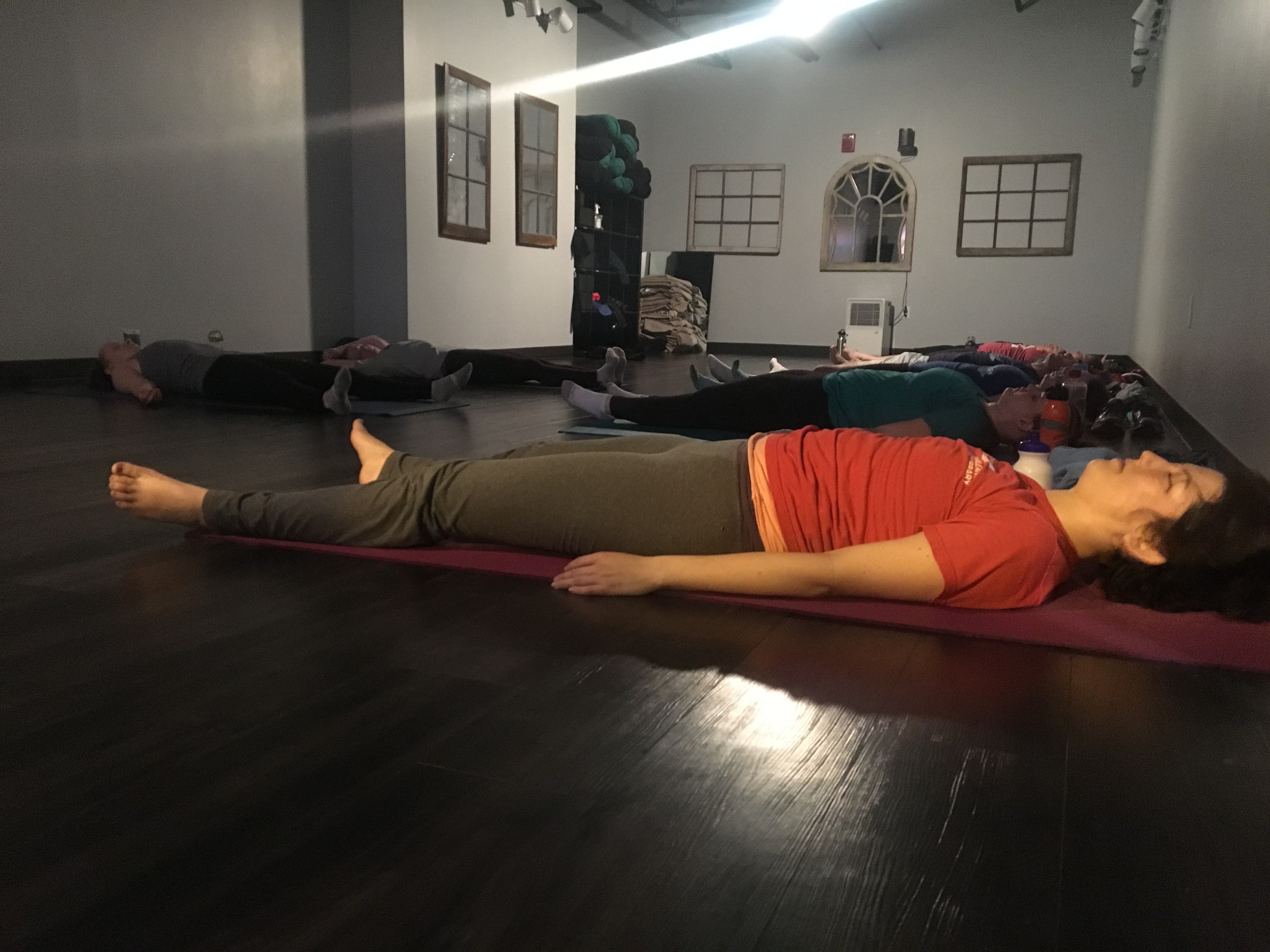
DIY Bootcamp – Choose your own adventure!
Do you remember those good ol’ “choose your own adventure” books? They were so much fun! What happens when a bootcamp coach recalls such happy childhood memories (said no one ever…)? Well, yours truly turns bootcamp planning into adventure mapping, only instead of journeying under the sea or creating your very own robot my bootcampers got to choose whether to do burpees or tuck jumps, push-ups or V-Ups, and so on and so forth. What fun!
I know what you’re thinking…I want to choose my own bootcamp adventure!!!! Well, ask and ye shall receive. Below is your very own roadmap.

Try it out from start (50 Plank Jacks) to finish (10 Roll Ups/Roll Downs – a Pilates move) three times, picking a different path each time. It should take you around 30 minutes and kick your butt! Grab a buddy to hold one another accountable and make it a little more fun.
MOARfit 20-Minute Total Body Workout & HIIT It and Quit It Playlist
Step 1: bump this Spotify playlist (and follow me for all my music)
We’re going old school with this playlist. Who doesn’t like Missy Elliot, Mase, Eve and more! I know music is a main motivator for me when I workout. What are your go-t0 sweat session jams?
Step 2: press play, no sound needed
(Please ignore my video editing 🙂 I’m still learning how to use text overlay!)
Step 3: post a picture or video of yourself doing one of these #MOARfitmoves on Instagram and tag me (@MOARfit) so I can check you out and give you some pro coaching tips!
Your New Healthy Routine + a 7-Day Game Plan to Take Action Today!
Whether you’re looking to jumpstart a healthier lifestyle, change up a stale fitness routine, or introduce new elements into an already beloved wellness program, this post is for you.
Let’s face it, we all have aspects of living healthy and being fit that we love and those that we loathe. For some, stretching is at best an afterthought while others could hang out in forward folds and spinal twists all dang day. The same holds true for every other component of a well-rounded healthy lifestyle—strength training, meditation, active recovery, cardio, and the list goes on.
While it’s natural to pick favorites, it’s important that we all strive to balance our regimens for mind-body optimization and longevity. If you find it hard to stay motivated or juggle all these elements, try out my 7-Day Game Plan for a Healthy New Routine.
7-Day Game Plan for a Healthy New Routine
DAY 1: Strength Training
Pick 5 body weight exercises to build your functional fitness. Include one plyometric move to get your heart rate up. Do each exercise for 45 seconds followed by 15 seconds of rest 4 times. (20-25 minutes)
Example:
- Mountain Climbers
- Squats
- Alternating Lunges
- Walk-Out Planks
- Push Ups
DAY 2: Stretch
Take a Pilates or Yoga Class at your favorite gym, or try some place new. Make sure you let the teacher know beforehand if you’re brand new to the practice or if you have any medical conditions or injuries they should be aware of. Aim for a class that’s at least 45 minutes but no more than 75 (unless it’s a very gentle yoga class). (45-75 minutes)
DAY 3: Active Recovery
Go for an easy walk or leisurely bike ride—and always wear your helmet!
The Washingtonian recently ran a piece of 20 of the best walks to do around Washington, DC. Check out their list for motivation, or drop into Rock Creek Park for a little breathe of fresh air amidst our urban metropolis. (60 minutes)
DAY 4: Intervals
Warm Up for 5 minutes with dynamic stretching or a light jog.
Do 10-15 30-second intense cardio intervals (ex. burpees, speed cycle, stairs, sprints, row) with 2 minutes lower intensity work in between. (30-45 minutes)
DAY 5: Stretch
Take a Pilates or Yoga Class at your favorite gym, or try some place new. Make sure you let the teacher know beforehand if you’re brand new to the practice or if you have any medical conditions or injuries they should be aware of. Aim for a class that’s at least 45 minutes but no more than 75 (unless it’s a very gentle yoga class). (45-75 minutes)
DAY 6: Endurance
Pick a cardio activity you love (hiking, running, biking, rowing, swimming) and do it at a moderate intensity level – i.e. you could hold a conversation but it’d be tough – for at least one hour and up to two. (60-120 minutes)
DAY 7: Active Recovery
Go for an easy walk or leisurely bike ride—and always wear your helmet!
The Washingtonian recently ran a piece of 20 of the best walks to do around Washington, DC. Check out their list for motivation, or drop into Rock Creek Park for a little breathe of fresh air amidst our urban metropolis. (60 minutes)
Start with one week. If you miss a day, don’t sweat it and don’t try and play catch up all in one day. Hit the reset button with Day 1 the next week and try it again. Consistency is key. If you start to get down on yourself for a day when you don’t find a way to fit a workout in you’ll inevitably fail. Give yourself some grace, stay positive, and keep on keepin’ on for the most enduring lifestyle results.
How to FUEL your body for optimal athletic performance: Part 2
Last week, we kicked off my three part series on how to fuel your body for optimal athletic performance by discussing pre-race nutrition. This week we’ll talk about the ever-confusing subject of what to eat during a long training workout or endurance event. Experiment with different options before running your marathon, cycling your century, or attempting a triathlon to find what foods work best with your body chemistry. Again, remember that fuel should be a balance of nutrients, energy (calories), taste, digestion, budget and convenience.
How to FUEL your body for optimal athletic performance: Part 2 – What to eat during your training workout or endurance event
(Adapted from The Thrive Diet, by Brendan Frazier)
1. Consume mostly liquid or easy-to-digest foods like gels. Solid food takes more energy and blood to digest than liquid, leaving you with less fire for movement and power. Solid food is also more likely to cause intestinal distress, which can ruin a race. Except for ultra-endurance events, skip the solids. Natural, homemade options to try are:
- 10 oz of coconut water blended with 1 small banana (hello electrolytes!).
- 10 oz of water, 2 Tbs maple syrup or honey, and 1 Tbs chia seeds,
- 2 dates squished up with 1 Tbs of your favorite natural nut butter.
2. For all workouts, take in 4-6 oz of water every 10-20 min. Your goal is to replace most of what you lose in weight, so if you want to get precise, you can figure out what you lose during a standard workout and drink the exact amount you need to replace it. This is a good rule of thumb if you don’t want to go through the trouble. Tip: taking big gulps helps water clear the stomach faster, so if you don’t like that sloshing feeling, chug. Also, don’t wait until you’re thirsty to drink. Stay ahead of dehydration by taking every opportunity to ingest water, even if it’s just a little bit here and there.
3. Get 500 milligrams of sodium with every 16 oz you drink. When you sweat, you lose electrolytes, and that puts you at risk for hyponatremia if you hydrate without replacing them. For those of you making your own drinks and gels, 500 milligrams is a little less than the amount in a quarter teaspoon of salt.
4. For workouts and races lasting over an hour (and up to 4 or 5 hours), you need 30-60 grams of carbohydrate per hour. You can find where you fit in that range by dividing your body weight in pounds by 4 to get a minimum hourly carbohydrate requirement, in grams. You can give your body what it needs with a sports drink or a combination of energy gel and water. A little bit of protein, in a 4:1 carb-to-protein ratio, may help minimize muscle damage during endurance events.
5. For anything lasting much more than 5 hours, the nutrition focus shifts to fat, with a smaller amount of carbohydrate.
Check back next week for what to eat after a long training workout or endurance event.
Why Protein Isn’t a Dietary Silver Bullet
Why Protein Isn’t a Dietary Silver Bullet.
Originally published by STACK.com | August 15, 2013
Check out my STACK Expert profile for more articles on fitness and nutrition. //
Our collective desire for quick fixes makes diet crazes appealing. But although the names may change—Atkins, Zone and, most recently, Paleo—all fad diets tend to have one thing in common: an emphasis on increasing protein intake.
For years, fad diets have demonized healthy fats and carbs, claiming that if you eat too much of these macronutrients, you will get fat. Yet, protein has remained largely unscathed by the mainstream media.
This also holds true for athletes. Lean protein—and lots of it—is considered essential for athletic recovery. Muscle-repairing fats and energy-replenishing carbohydrates are given short shrift.
If you are one who focuses your nutrition on protein, it’s time to listen up.
Protein is an essential part of our daily diet. It constitutes the structural basis of our muscles, skin, nails and hair. There’s no doubt that it’s essential to our well-being. However, it’s not the only important nutrient.
Pick up your favorite fitness magazine, and you will see why our nutrition mindset is biased toward protein. Pages and pages of ads celebrate the latest protein powder or bar, but do you see any ads for products containing carbs or healthy fats? You’d think Americans were suffering from a serious epidemic of protein deficiency.
Fortunately, that is not the case. In fact, most of us—including vegetarians and vegans— get more than enough protein through our regular daily food intake.
For the average person, it’s recommended to consume 0.8 to 1.0 grams of protein per kilogram (pounds / 2.2) of body weight. If you’re an athlete or someone performing high-intensity physical activity (e.g., training for a triathlon or marathon), you should increase your daily protein intake to 1.1 to 1.4 grams per kilogram of body weight.
In other words, an active 135-pound woman should eat around 75 grams of protein per day, and an active 180-pound man should have 140 grams. Anything beyond the amount your body can use will be excreted through urine, so ultimately any excess protein is wasted. And, consuming too much protein may stress your liver and kidneys when converting it to carbs or fat for energy.
So despite its celebrated status, too much protein simply won’t do you any good. Remember also that protein isn’t a miracle food that you can chow down on without the risk of gaining weight. It has just as many calories per gram as carbs.
So, what should you focus on in your diet?
Ideally your daily caloric intake should include 25 to 35 percent fat, 15 to 20 percent protein and 55 to 60 percent carbs. In contrast, the Zone diet calls for a 30:40:30 ratio. That’s double the amount of protein and not nearly enough carbs to fuel your body for quality workouts.
Bottom line: although protein is an important component of a healthy diet, you need to break the mindset that protein is the silver bullet of nutrition. Accept that healthy fats and carbs have a place in your diet, and you will be more likely to reach your fitness and health goals.
MoYoga Power Lunch Plan (PLP)
We’ve all read the articles and listened to the NPR story about how sitting at a desk all day is bad for your health. Studies show that sitting for extended stretches can disrupt metabolic function leading to a variety of ailments. One study in particular found that sitting for 11 or more hours per day increased the risk of death by 40%, regardless of other activity levels.
When I started to hear these grim predictions–in my mind akin to those for the end of the world as we know it–I saw a big, glitzy Vegas billboard flashing “Welcome to the rest of your life. You are S.O.L. suckers. ” So, are we truly shit out of luck?
Fear not my fellow office drones, you are not doomed to this fate. How come? There are a lot of things you can do to counterbalance your sedentary occupation. From sitting on an exercise ball instead of a desk chair (all the cool kids are doing it) to breaking up your day with a couple 15-minute walks, it may be easier than you think to transform your daily routine for better health. While it is the small things like those I just mentioned that will make a difference in the long-term, if you want more immediate results–more energy, burning off those omnipresent holiday cookies, etc–the bottom line is you need to get up and move. To help you with this try my work-week, Power Lunch Plan (PLP). And yes, I did just create my own acronym…this is D.C. after all.

The Urban Dictionary defines ‘Power Lunch’ as the following:
|
A gathering of co-workers or of mostly young male corporate douches (see yuppies) for a 3-hour lunch on the clock that includes such things as a motorcade of Lexus and BMW automobiles, motivational speakers, cheers, steak, and talk about something like the “bottom line” or bonuses or something. Supposedly a motivational event, but usually turns out to be a feast of gluttony and ruined neckties. Newly motivated and encouraged participants are expected to go back to the office and make phone calls and fire off emails and achieve results, but most usually end up at a local boozer and get tanked before happy hour even starts.
|
My version of the power lunch is quite different. It’s all about using your precious lunch break a few times a week to get up and get moving.
MoYoga PLP*:
30 min interval training on a treadmill, 5 min cool down, 5 min stretching, 3 days a week:
- Begin at 4 mph, incline level 10 for 2 min. Increase to incline level 12 for 2 min. Increase to incline level 15 for 2 min.
- Reduce incline to 0 and increase speed to 7.5 mph (or a comfortable running–not jogging–pace for your body) for 2 min. Increase speed to 8.5 mph (or a challenging running pace for your body) for 1 min. Reduce speed to 6.5 mph (or an easy running pace for your body) for 1 min.
- Reduce speed to 4.1 mph, incline level 13 for 2 min. Increase to incline level 15 for 2 min. Decrease to incline level 13 for 2 min.
- Reduce incline to 0 and increase speed to 7.5 mph (or a comfortable running–not jogging–pace for your body) for 2 min. Increase speed to 8.5 mph (or a challenging running pace for your body) for 1 min. Reduce speed to 6.5 mph (or an easy running pace for your body) for 1 min.
- Reduce speed to 4.2 mph, incline level 15 for 2 min. Decrease to incline level 12 for 2 min. Decrease to incline level 10 for 2 min.
- Reduce incline to 0 and increase speed to 7.5 mph (or a comfortable running–not jogging–pace for your body) for 2 min. Increase speed to 8.5 mph (or a challenging running pace for your body) for 1 min. Reduce speed to 6.5 mph (or an easy running pace for your body) for 1 min.
- Do 5 min cool down followed by at least 5 minutes of stretching.
Do this workout on three lunch breaks a week for a month and I guarantee you’ll look better and feel much more motivated for the second half of your workday. Your boss will be amazed at how breaking a sweat will boost your afternoon productivity.
Use the impending doom that is the predicted end of days as motivation to start making healthy, lifestyle-changing decisions for your lunch breaks today. No time like the present, right? And when the world doesn’t magically implode tomorrow (knock on wood), use your renewed sense of gratitude for the ground beneath your feet to take out your own personal insurance policy for a happier, healthier more energetic future.
* Unfortunately your ability to try my PLP is contingent upon access to a gym in or nearby your office. Luckily, for many folks in D.C. employers are wising up to the importance of providing employees access to fitness facilities.





